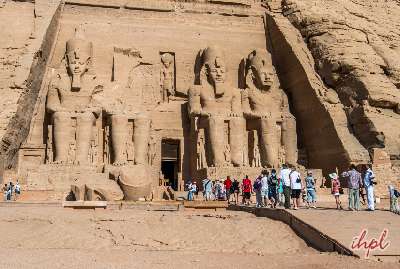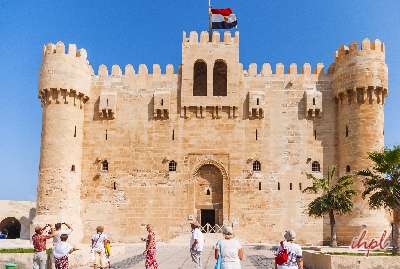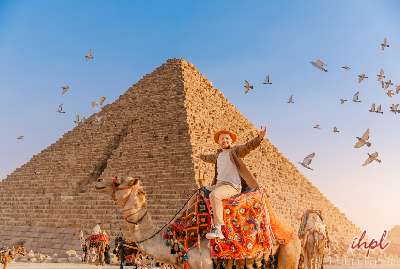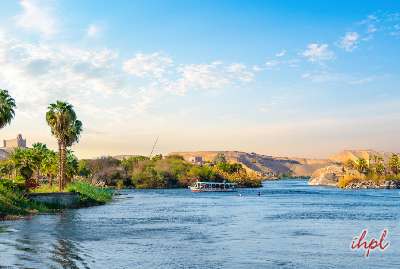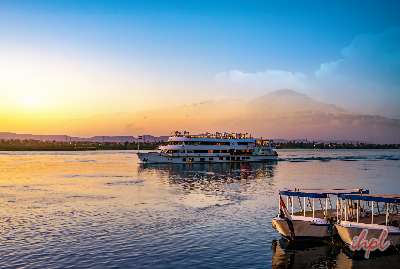Not just today, the city of Alexandria has been attracting travelers from all walks of life since centuries – be it historians, philosophers, artists, scholars, or mathematicians.
Located on the Mediterranean Sea in southern Egypt, this beautiful port city is also known as the ‘Pearl of the Mediterranean’. It is the perfect place if you are looking beyond the mainstream tourist places in Egypt. Taking a walk on the water’s edge of Alexandria city will take you back to the times gone by. With so many world-known attractions like Bibliotheca Alexandria, 15th century seafront Qaitbay Citadel (now a museum), the blend of old and new is an interesting sight to behold.
Interested to explore the city? Book a private tour to Alexandria with Indian Holiday today and learn more about the city’s heritage, culture, and architecture. Explore the Greco-Roman landmarks, old-world cafes, renowned museums, sandy beaches, the magnificent library, and plenty of historical sites. With so many options, the city of Alexandria will not disappoint you.
Overview of Alexandria City
| Location | Mediterranean Sea in Southern Egypt |
| Address | Alexandria Governorate, Egypt |
| Google Map |
Highlights
- Visit the National Museum to get an understanding of the diverse history of Alexandria city in Egypt.
- Head to the Library of Alexandria, which was once the largest and most significant library of the ancient world.
- Witness Roman triumphal column or popular called Pompey’s Pillar.
- Visit the Citadel of Qaitbay, which was converted into a museum after the revolution of 1952.
- Walk in the Royal Gardens.
- Enjoy your time with animals at Alexandria Zoo.
- Unwind at the Maamoura Beach.
Alexandria City
Let’s dive into the series of events that led to the Alexandria city we see today.
Alexandria was originally a small port city known as Rhakotis, which was discovered by Alexander the Great. After he won his battle of Phoenicia, he immediately turned towards Egypt. Looking at the small port, he envisioned a city and laid out a design. But after he left for his battle in Persia, Alexandria’s development was handed over to the Ptolemy Dynasty.
After the city of Alexandria in Egypt became a major center for early Christainity, many pagan sites like the Serapion and the Temple of Serapis – both linked with the Library of Alexandria – were destroyed. People who studied there fled. In the 7thcentury CE, Muslim-Arabs arrived and coqured the region and city’s development declined further.
In 323 BCE, after the death of Alexander the Great and the construction of the Alexandria city came completely under the Ptolemy who began the rule of Egypt from here. After the city’s development was completed, it became one of the largest cities in ancient times and many scholars, mathematicians, historians, scientists, and artists. Eratosthenes became the chief librarian at the Library of Alexandria and taught at the university there. Archimedes was also a great mathematician who came and studied at the library.
Julius Caesar of Rome defeated Pompey in 48 BCE and declared martial law in the city. Shortly after, Pompey was killed and he and Cleoparta VII became allies. He burned down many places including the library and scholars fled the city. After Julius’ death, Mark Antony or Marcus Antonius, a Roman politician took over and Cleopartra VII formed an alliance with him. They both committed suicide and the Ptolemaic line ended. Alexandria came under the Roman Empire under the rule of Augustus Caesar who again restored the city and extracted the Library of Alexandria.
Unfortunately, the city of Alexandria was destroyed once again in 115 CE in the Kitos War and was restored by the Rome Emperor Hadrian. The city became the center of religious disputes between the old faith and the new Christain faith. Theodosius encouraged Christianity and the people who tore down the pagan temples in Alexandria and converted some into churches. Alexandria city in Egypt declined rapidly after this event and all the scientists, scholars, thinkers completely left the city for safer locations.
Once a peaceful city now became a battlefield. In 619 CE, Alexandria was conquered by the Saasand Persians. In 628 CE, the Chistian Byzantine Empire under Heraclius re-claimed the city but lost it to Arab Muslims under Caliph Umar and Egypt fell into Islamic rule. Churches were dismantled and converted into mosques.
Whatever was left and not demolished was taken down by nature. By 1325 CE, most of the Ptolemaic Alexandria was ruined. The Great Lighthouse was destroyed by the earthquake too.
Many centuries later in 1994, the first discovery was made known and a number of buildings, statuary, and relics were found in the harbor of Alexandria city. They were excavated by professor Jean-Yves Empereur and his team who will continue to bring a light to the lost golden age of Alexandria.
If you are intrigued by the city’s past and want to visit it on your next Egypt tour, book day tours to Alexandria from Cairo with Indian Holiday. know about the events that occurred in the city and have a memorable experience.
Interesting Facts about Alexandria City
- Pompey’s Pillar is the largest pillar in the world.
- The Library of Alexandria was once the biggest library in the ancient world.
- Alexandria’s Lighthouse was once the world’s largest building.
- The Greek translation of the Bible was also composed in Alexandria and was kept among the great books in the Library of Alexandria.
- One of the world’s largest necropolises is located in Alexandria – Gabbari Necropolis.
- The Great Library of Alexandria was demolished and a new library called Bibliotheca Alexandria was completed in 2002.
- The city has the oldest tram in Africa.
- The circumference of the earth was first calculated in Alexandria city by Eratosthenes, Greek scientific writer, poet, and astronomer.
- The largest port of Egypt is located in Alexandria.


